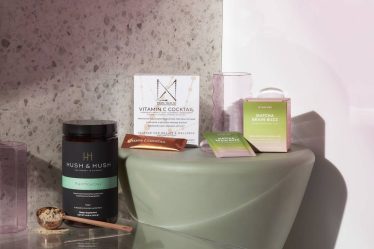
Your skin is having a meltdown and creating a few bumps and craters on your radiant face. You may have tried countless products that didn’t deliver the results you want if you are anything like me.
Let this take your mind off of it – sometimes, the answers to skin care problems are right in our own kitchens.
I started buying skin care masks that had ingredients I recognized from brands like Lush and Glossier. My sensitive skin responded better to natural products and reacted faster to them after a breakout.
Lush, for instance, has many masks that should be stored in your refrigerator due to the natural ingredients such as honey, chocolate, oatmeal and bananas. Most stores make these masks in bulk so they only need to add a few ingredients. You might also find glycerin or added fragrance in the same masks. Both of these ingredients are known to cause skin irritations.
Making your own masks takes the guesswork out when it comes to putting on your makeup. The best thing about it all is the learning process. You can quickly find the problem and make changes to your recipe if it doesn’t work. If it works, you can find a new solution for your skin that is only a few steps from your bathroom cabinet.
Here are three homemade skin care mask recipes.
Coffee mask
If your skin needs immediate replenishment, this mask is an excellent choice. This mask is great for after a long day or during a cool down.
Ingredients
- 2 tablespoons cocoa powder. Cocoa powder can be used to soften the skin. It contains small amounts of cocoa butter and works well when mixed with liquid.
- 1 tablespoon honey. Honey has been used for skin care since ancient times to relieve eczema, and reduce inflammation. Raw honey can also balance the bacteria in your skin.
- 1/2 teaspoon lemon juice The skin has been shown to be less prone to dark spots by citrus. Although a small amount of citrus can be used in a mask shouldn’t cause any problems, it is important to use sunscreen after masking. Citric acids, which can cause skin irritation if exposed to the sun, can be applied directly to the skin.
- 2 tablespoons ground coffee Cellulite can be reduced by using coffee. It is also antibacterial and can be used as an exfoliant.
Coffee mask recipe
- Mix all ingredients together in a bowl. Apply the mixture immediately to your face. Add 1/2 teaspoon olive oil to make the mask thinner.
- Let it dry for 20 minutes, or until it becomes a thick paste.
- After drying, rinse the mask with warm water. Use circular motions to rub the mask around your face, then remove it.
Turmeric mask
The turmeric mask can give you a natural glow. It’s rich in anti-inflammatory, antioxidant and cleansing properties.
Ingredients
- 1 teaspoon turmeric. Turmeric has a long list of benefits, including reducing hyperpigmentation, wrinkles, irritation, and reducing acne. You only need a little, so the color might linger for a few days. Don’t leave the color on for longer than recommended.
- 2 tablespoons greek yogurt (or aloe vera gel if non-dairy). Yogurt is great for adding moisture to the skin. This mask also has a cooling and smooth texture. You can also replace the aloe vera gel with fresh, unprocessed aloe vera gel if you have a dairy intolerance. This will provide the same cooling effect.
- 1 teaspoon honey. It can be used in combination with turmeric to increase the antioxidant properties.
Turmeric mask recipe
- Mix all ingredients together in a bowl until you get a smooth paste.
- Spread the mask evenly over the entire face, and on the neck. Allow the mask to dry for between 10 and 15 minutes. You shouldn’t leave the mask on for more than 20 minutes or else your skin may absorb the orange-colored turmeric.
- Use warm water to wash your face and dry it.
Tea tree spot treatment
Although this treatment is not a complete facial mask, it can be used to treat acne spots and irritations. It helps reduce oil production.
Ingredients
- 4 drops of tea tree essential oil. This will promote healing after you have gotten rid of that pesky zit. Careful though, there are some risks and potential side effects involved with applying it unmixed on the skin.
- 1/2 teaspoon rosehip oil. Rosehip oil is a gentle carrier oil that helps reduce inflammation and promotes collagen production. You can substitute rosehip oil with olive oil or coconut oil to make a base that is easy to store.
Tea tree spot treatment recipe
- Mix the oils together in a small bowl.
- Apply the solution using a cotton swab to the problem areas. Leave it on overnight.
- Wash your face and pat dry in the morning.
Although research shows that essential oils have health benefits, FDA does not regulate their quality or purity. Before you start using essential oils, it’s important that you consult your doctor. Also, make sure to investigate the quality of any brand’s products. Before you try a new essential oil, make sure to do a patch test.
You can experiment with your ingredients at home to create your own skin care products. Don’t be afraid to adjust the formula according to your skin.
Different combinations may produce different results. Part of the fun is discovering your own way to skin care success using the natural resources at your home.



